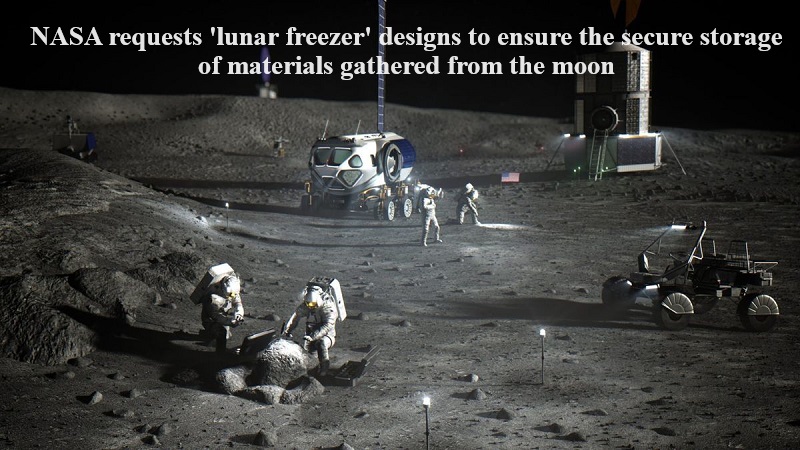
NASA has issued a request for “lunar freezer” designs to ensure the secure storage of materials collected from the moon during the upcoming Artemis missions, as reported by Space.com. The primary purpose of this freezer is to safely transport scientific and geological samples gathered during the Artemis program. NASA also envisions the lunar freezer as a storage space for “human biological/physiological samples” obtained during these missions, enabling the study of the effects of lunar spaceflight on astronauts, according to a request for information (RFI) posted on the federal contracting website SAM.gov.
NASA aims to complete the lunar freezer by the end of 2027 and intends to launch it as part of the Artemis 5 mission. To ensure compatibility with various vehicles, facilities, and spacecraft used by Artemis astronauts, the lunar freezer must be designed to withstand the physical forces experienced during launch and landing, including vibrations and shocks. It must also meet specific size, weight, and temperature requirements. The internal volume of the lunar freezer should be at least 10x10x26 inches (25x25x66 centimeters), with a total weight of less than 121 pounds (55 kilograms). Furthermore, it must maintain a temperature of minus 121 Fahrenheit (minus 85 Celsius) for at least 30 days to preserve stored samples.
Additionally, NASA stipulates that the lunar freezer must include an onboard display for monitoring and control by Artemis crews. It should offer both wireless and wired internet connectivity to transmit telemetry to Artemis vehicles and ground stations on Earth. These advanced features are crucial for the freezer’s functionality and integration into the Artemis program.
Overall, NASA’s request for lunar freezer designs underscores the agency’s commitment to conducting comprehensive research and exploration missions on the moon, with a focus on preserving and studying valuable samples and data collected during these missions.

Post Your Comments